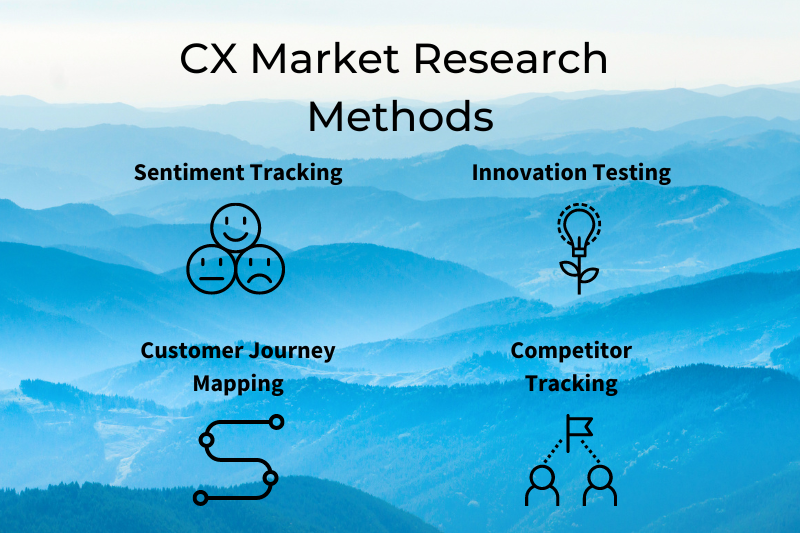If you’ve ever been approached by a business leader or stakeholder who requested that you conduct market research, you probably asked yourself, “Why is there a need to conduct market research?” and “Is it worth it?”
In this article, we’ll explain what market research is, what the two main ways to conduct market research are, and 10 reasons to conduct market research.
What Is Market Research?
At its simplest, market research is the act of researching a market to make informed decisions about doing business in that market.
According to Netigate, there are multiple types of market research, including brand research, consumer research, product development and usability testing, and more. On its own, “market research” could mean one or multiple types of market research.
What Are the Two Main Ways to Conduct Market Research?
You can conduct market research in two ways: primary and secondary.
The MSR Group defines these methods well:
Primary market research: Primary market research is comprised of you going out there and conducting your own research. Analyzing surveys, finding out which techniques your direct competitors are utilizing, and looking to see what customers are looking for right now are all primary market research.
Secondary market research: Secondary market research is the term for learning by analyzing data someone else has already done. Published studies, government data, and social media statistics are all useful secondary market research, although it’s important to keep in mind that anyone can access this, so it may not give you the cutting edge you’re hoping for.
You can also combine these methods to expand and refine your market research if you have the resources to do so.
10 Reasons to Conduct Market Research
Mitigate Risk
You can mitigate the chances of making risky moves in business when you make informed business decisions based on what data is telling you. There is always a chance of risk, no matter what stage your business is in – specifically when it comes to starting the business, developing new offerings, and growing the business – but market research can help you with some of the most important business details you need to know: the four Ps.
The four Ps are:
- Product – What products or services do your customers really want? What benefits are they looking for?
- Price – What is the customer willing to pay for that product or service? Consider profit margins, competitor prices, and financing options.
- Placement – Where will you sell your product? Where will your business operate?
- Promotion – How will you reach your customers? What marketing avenues will you use?
When you know the four Ps, you can mitigate a lot of risks when making business decisions.
Solve Business Challenges
When you have a problem and need to identify the source of the issue so that you can solve it, you can perform market research. Performing market research can also help you see underlying issues you may not have been aware of.
The challenge with using market research to solve business challenges is that you need to conduct the right type of research to identify the problem.
For example, if a product-based business notices fewer orders in one location, it may perform a SWOT analysis to determine if new competitors have moved in near that location. But the problem may be that new employees at that location aren’t selling according to company policy, which is turning away customers.
If you want to solve a specific business challenge with market research, it’s best to attempt to align the type of research with the details of the problem itself so you can find the answers you’re looking for in a timely manner. However, market research is rarely, if ever, a waste of time, so you will likely receive other takeaways after conducting market research.
 Prepare For Economic Changes
Prepare For Economic Changes
Monitoring the economic environment (globally, nationally, and locally) can help you prepare for economic changes and adjust the timing of business moves strategically. We all experienced this in some way during the COVID-19 pandemic, but it can be beneficial on a smaller scale, too.
For example, a business owner that monitors the U.S. market while leading a national business can postpone a product or service launch if data is telling her that Americans are holding onto their money tightly during a period of inflation.
Monitor Competitors
Another benefit of market research is that it helps you monitor competitors and adjust accordingly.
When identifying your competitors, consider any business that offers a similar service or product to you that your audience may choose – locally or online. Who are they? What markets are they located in? How large are they? Do a SWOT analysis to make sure you can compete and then continue to monitor them as they change and your business changes.
It’s important to monitor your competitors because they may:
- join or leave your market
- launch new products or services
- modify their prices
- change their operations
These changes may affect how your audience decides which business to purchase from or work with, so if you monitor your competitors, you can make changes to your business to compete.
Maintain A Competitive Advantage
According to Investopedia, having a competitive advantage means increasing your “market share through increased efficiency or productivity.”
You can develop a competitive advantage for your business by strengthening your brand, protecting your intellectual property, streamlining processes to cut costs, differentiating your products or services, serving a specific niche very well, and producing quality products at a lower cost.
Expand Into Markets Effectively
According to Investopedia:
The purpose of market research is to look at the market associated with a particular good or service to ascertain how the audience will receive it. This can include information gathering for the purpose of market segmentation and product differentiation, which can be used to tailor advertising efforts or determine which features are seen as a priority to the consumer.
Market research enables you to learn more about your current customers and target new customer segments. What do they need? Are those needs being fulfilled in that area? Can you fulfill those needs to fill gaps or provide a better service/product?
These details may inform you that it would be beneficial to open or serve new locations and potentially serve new industries. Expanding into new markets based on data proves that your new location or service area will perform well, which will help your business’s bottom line long-term.
In other words, by serving new markets, you can create a diversification strategy.
Develop a Market Development Strategy
Similar to the above, you can also develop a market development strategy, which means “growing your market share by developing new customer segments, expanding your user base, or expanding your current users’ usage of your product.”
A market development strategy is a sales-focused strategy that helps you sell more to your current customers and new customers. To do this, you don’t need to serve a new location, but instead, better serve your current market. How can you serve more people in the markets you are already in?
Develop Market Penetration Strategy
A market penetration strategy is often confused with a market development strategy, but they are different. Unlike the sales-focused market development strategy, market penetration focuses on marketing. The goal is the same – to sell more products or services to your current markets – but the tactics differ.
Specifically, market penetration is “the actions taken to overtake competitors and gain a larger share of the market.”
Developing a market penetration strategy is a lot like making a marketing strategy. Here are a few market penetration strategies you can try:
- bundle products or services
- lower prices
- add distribution channels
- change the product design
- simplify the buying process
Develop A Data-Driven Marketing Strategy
A lot of market research focuses on your competitors and new audience segments, but your marketing strategy needs to focus on your current and potential customers. Use the data you collect in your marketing programs to inform your marketing approach.
According to TechnologyAdvice, “Your current customers are one of the best sources of information about how to convert future customers — because you’ve already succeeded with them.”
So how do you do that?
You likely already have a CRM in place as well as digital marketing platforms, such as a website, social media accounts, an email marketing account, advertising accounts, and various analytics accounts to track campaign performance. Use the data you already have access to on these platforms to develop and refine your marketing strategy.
Not sure where to start? We go over the basics of how to create a successful marketing strategy in this article.
Provide An Excellent Customer Experience
According to Fuel Cycle, there are four common customer experience (CX) market research methods:
- Sentiment tracking – Your customers’ perception of your business changes over time, which is why it’s important to track your business’s sentiment. Specifically, by using an automated system that analyzes online, text-based conversations about and with your business.
- Innovation testing – Test business innovation (with products and services) with your top customers before launching to your entire audience. This ensures you will successfully delight your customers using proven methods.
- Competitor tracking – Monitor what your competitors are doing and your audience’s response to your competitors’ offerings, changes, and marketing strategies. Also track how your customer experiences shift over time based on your competitors’ changes.
- Customer journey mapping – When you know how your customers go through the customer journey, you can lead them to each step of the journey and then repeat that process for future customers. This also helps you send appropriate marketing messages at the right times.
By using these market research methods, you can improve your customer experience as your customers’ expectations change over time. Improving your CX helps increase customer retention, which leads to an increase in profits.
Conclusion
By now, we hope you understand the benefits of conducting market research. So whether you want to launch new offerings, expand into new markets, or keep an eye on your competitors, market research can benefit your business.
If you need help with secondary market research efforts, our team can help. Here’s how our membership works.




 Prepare For Economic Changes
Prepare For Economic Changes